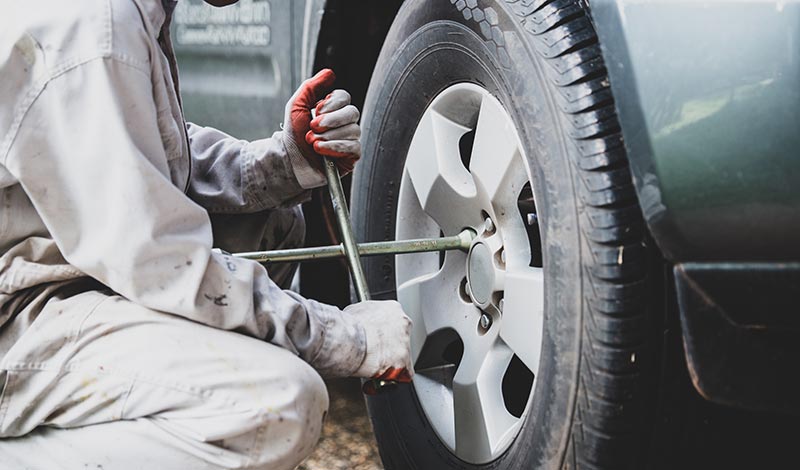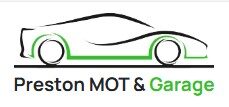Fuel efficiency is not just about saving money; it’s a commitment to a more sustainable lifestyle. This section introduces fundamental concepts and practices to optimize fuel consumption, setting the stage for a detailed exploration of practical strategies.
Firstly, understanding the basics of how your vehicle consumes fuel underpins every decision you make on the road. Factors such as engine type, vehicle weight, and aerodynamic design significantly influence fuel efficiency. Awareness of these aspects allows drivers to make informed choices, from selecting a fuel-efficient vehicle to adopting driving habits that reduce fuel consumption.
Moreover, the relationship between driving behaviour and fuel usage is complex yet crucial. For instance, aggressive driving, such as rapid acceleration and hard braking, can increase fuel consumption dramatically. Recognizing these patterns and adopting smoother driving techniques can lead to considerable savings.
Finally, this section lays the groundwork for the subsequent topics. It guides you through the nuances of efficient route planning, vehicle maintenance, and leveraging technology to enhance fuel economy. Embracing these concepts is the first step towards a more fuel-efficient and environmentally friendly journey.
Strategic Route Planning: Reducing Distance and Traffic Impact
Strategic route planning is crucial for optimizing fuel efficiency. By meticulously planning your journey, you can significantly minimize the distance travelled and reduce your vehicle’s fuel consumption. Start by selecting the shortest, most direct routes. Modern GPS navigation tools can be incredibly helpful, offering real-time traffic updates and suggesting alternative paths to avoid congested areas.
Furthermore, timing your travel can have a profound effect on fuel efficiency. For instance, avoiding peak traffic hours can prevent frequent stops and starts due to congestion, which tends to increase fuel usage. Early morning or late evening travel often encounters less traffic, making for a smoother, more fuel-efficient drive.
Additionally, consider the nature of the route. Highways typically provide a more consistent speed, reducing fuel consumption compared to stop-and-go city driving. However, if a highway is known for heavy traffic, a slightly longer but less congested route might prove more efficient.
In essence, effective route planning is about finding the perfect balance. It involves choosing the right path, timing, and even considering the type of roads. By doing so, not only do you save on fuel, but you also contribute to a less stressful, more enjoyable journey.
Vehicle Maintenance: Key Practices for Fuel Efficiency
Regular vehicle maintenance is crucial in optimizing fuel efficiency. Ensuring your car is in top condition allows it to run more efficiently, consuming less fuel. Start with the engine, the heart of your vehicle. Regular oil changes, using the manufacturer-recommended oil, can significantly reduce engine friction. This step alone can improve fuel economy.
Furthermore, consider the air filter. A clogged air filter restricts airflow to the engine, causing it to work harder and, consequently, use more fuel. Replacing a dirty air filter can improve your car’s fuel efficiency by as much as 10%.
Now, let’s talk about spark plugs. Worn or fouled spark plugs can misfire, wasting fuel. Ensuring they are in good condition can make a noticeable difference in your vehicle’s performance and fuel consumption.
In addition, pay attention to the fuel system. A fuel system clogged with dirt and deposits can decrease engine performance, leading to higher fuel consumption. Regular cleaning can maintain optimal engine efficiency.
Lastly, don’t overlook your vehicle’s emission system. It’s not just about passing emission tests; a properly functioning emission system helps maintain good fuel economy. It ensures that the fuel in your vehicle is burned efficiently and cleanly.
By focusing on these maintenance aspects, you can significantly enhance your vehicle’s fuel efficiency, making each journey more economical and environmentally friendly. Regular check-ups and proactive care are the keys to unlocking better fuel performance.
Driving Techniques: Smooth Operations for Saving Fuel
Adopting efficient driving techniques plays a crucial role in enhancing fuel efficiency. Firstly, maintaining a steady speed, especially on highways, can significantly reduce fuel consumption. Constant acceleration and deceleration strain the engine, leading to higher fuel use. Employing cruise control on long stretches can aid in keeping a consistent speed, thus optimizing fuel economy.
Moreover, anticipating traffic conditions is vital. Observing the flow of traffic and adjusting your speed accordingly helps avoid unnecessary braking and acceleration. For instance, when you see a red light ahead, it’s more fuel-efficient to gradually slow down rather than abruptly stop at the signal. This method not only conserves fuel but also reduces wear on your brakes.
Additionally, minimizing idling is another effective strategy. Idling for extended periods can consume more fuel than turning off and restarting the engine. In situations like waiting to pick someone up, it’s more economical to turn off the engine if the wait is more than a minute.
In conclusion, these simple yet impactful driving habits can lead to significant savings in fuel. By smoothly controlling your vehicle’s speed, anticipating traffic patterns, and avoiding unnecessary idling, you can enhance your vehicle’s fuel efficiency with every journey.
Speed Management: Balancing Velocity and Fuel Consumption

Understanding the relationship between speed and fuel efficiency is crucial for optimizing fuel use. Driving at a steady, moderate speed is more fuel-efficient than frequent acceleration and deceleration. Research indicates that vehicles typically operate most efficiently at speeds between 45 to 60 mph. Exceeding this range, especially above 70 mph, can significantly increase fuel consumption. Therefore, maintaining a consistent, moderate speed not only conserves fuel but also extends the life of your vehicle.
However, this doesn’t mean driving slowly is always the best strategy. Remarkably low speeds can also lead to increased fuel usage, especially in vehicles with larger engines. The key is finding a balance. Cruise control can be a valuable tool in maintaining this balance, particularly during long highway drives. It helps in keeping the vehicle at a constant speed, reducing the need for unnecessary acceleration and thereby conserving fuel.
Adopting these speed management techniques not only contributes to fuel saving but also promotes safer driving habits. By maintaining a steady speed, you can enhance your vehicle’s efficiency, reduce emissions, and ensure a more pleasant driving experience. Remember, the goal is to find a harmonious balance between speed and fuel consumption, creating a win-win situation for both your wallet and the environment.
Load Reduction: Lightening Your Vehicle for Better Mileage
Reducing the load of your vehicle is a straightforward yet often overlooked strategy to enhance fuel efficiency. Essentially, the heavier a vehicle, the more energy it requires to move. By minimizing the weight, you reduce the engine’s workload, leading to significant fuel savings. Begin by removing unnecessary items from the car, especially heavy ones. This might include clearing out the trunk or backseat of items that aren’t needed for your journey.
Furthermore, consider the impact of external attachments. Roof racks and cargo boxes, while convenient, can add substantial weight and aerodynamic drag. Removing them when not in use can markedly improve your vehicle’s fuel economy. The aerodynamic drag caused by these attachments demands additional power from the engine, thus increasing fuel consumption.
In conclusion, keeping your vehicle light not only contributes to better mileage but also to its overall performance and longevity. Regularly reviewing and clearing out unneeded items can become a simple yet effective habit. This practice not only saves fuel but also reduces wear and tear on the vehicle, offering long-term benefits beyond just fuel efficiency.
Fuel-Saving Technologies: Utilizing Modern Innovations
The advent of fuel-saving technologies has revolutionized the way we approach fuel efficiency. One significant innovation is the Start-Stop system, designed to automatically shut off the engine when the vehicle is stationary and restart it when acceleration is needed. This technology significantly reduces fuel consumption, especially in urban driving scenarios with frequent stops.
Moreover, advancements in aerodynamic design have played a crucial role. Modern vehicles are equipped with features like active grille shutters and smoother body shapes, minimizing air resistance and thereby enhancing fuel efficiency. This aerodynamic optimization reduces the engine’s effort, especially at higher speeds, leading to noticeable savings in fuel consumption.
Furthermore, the integration of hybrid systems marks a pivotal shift. Hybrid vehicles combine traditional combustion engines with electric propulsion, offering a blend of power sources. This synergy allows for more efficient fuel use, particularly in city driving where electric mode can be maximally utilized. The regenerative braking system in hybrids also contributes to fuel economy by converting kinetic energy back into usable electrical power.
Tire Maintenance: Optimal Pressure and Alignment for Efficiency

Tire maintenance is a critical yet often overlooked factor in optimizing fuel efficiency. Correct tire pressure ensures your vehicle runs smoothly, reducing the engine’s effort and, consequently, the fuel consumption. Typically, under-inflated tires increase resistance on the road, forcing the engine to work harder. Therefore, regularly checking and maintaining the recommended tire pressure can lead to significant fuel savings.
Moreover, wheel alignment plays a pivotal role in fuel economy. Misaligned wheels can cause uneven tire wear, which not only shortens tire life but also increases rolling resistance. This resistance means your car’s engine must exert more power, using more fuel in the process. Regular alignment checks are crucial, especially after encountering rough roads or potholes.
In essence, simple steps like maintaining tire pressure and ensuring proper alignment can substantially impact your vehicle’s fuel efficiency. Not only do these practices contribute to saving fuel, but they also enhance the overall driving experience and safety. Always remember, that small changes in routine maintenance can lead to significant benefits in both fuel economy and vehicle longevity.
Environmental Factors: Weather and Terrain Considerations
Understanding the impact of environmental factors is crucial for optimizing fuel efficiency. Weather conditions play a significant role in fuel consumption. For instance, cold weather can increase fuel usage as the engine requires more energy to reach optimal operating temperature. Conversely, hot weather prompts the use of air conditioning, which also elevates fuel consumption. It’s advisable to use climate control systems judiciously, balancing comfort with efficiency.
Moreover, the terrain greatly influences fuel efficiency. Driving on hilly or mountainous roads demands more power, thus consuming more fuel. On such terrains, maintaining a steady speed and using gears effectively can help mitigate excessive fuel use. Similarly, driving in urban areas with frequent stops and starts differs vastly from highway driving. In cities, adopting a more gentle acceleration and deceleration pattern can significantly reduce fuel usage.
In summary, being mindful of environmental elements like weather and terrain, and adjusting driving habits accordingly, can lead to notable improvements in fuel efficiency. By paying attention to these aspects, drivers can make more informed decisions, resulting in a more fuel-efficient and cost-effective journey.
Monitoring and Adjusting: Continuous Improvement in Fuel Efficiency
In the quest for optimal fuel efficiency, monitoring and adjusting your driving habits and vehicle performance is crucial. This ongoing process involves a keen eye and a willingness to adapt.
Start by regularly checking your vehicle’s fuel consumption. Many modern cars come equipped with fuel economy gauges that provide real-time feedback. This data is invaluable. It lets you see the immediate impact of changes in your driving style or route choices. For instance, you might notice that maintaining a steady speed on highways improves your mileage, or that avoiding heavy traffic areas reduces fuel usage.
Additionally, it’s beneficial to review longer-term trends in your vehicle’s performance. Monthly checks of your average fuel consumption can reveal subtle changes that might go unnoticed in daily driving. This could be an early indicator of maintenance needs or a sign to alter your driving habits.
Finally, staying informed about new fuel-saving techniques and technologies is important. The automotive world constantly evolves, with new findings and innovations emerging regularly. By keeping up-to-date, you can incorporate the latest best practices into your routine, ensuring that your approach to fuel efficiency is as effective as it can be. Embracing this cycle of monitoring, adjusting, and learning will not only enhance your fuel efficiency but also contribute to a more environmentally friendly and cost-effective driving experience.

